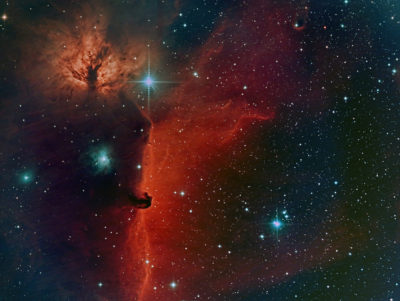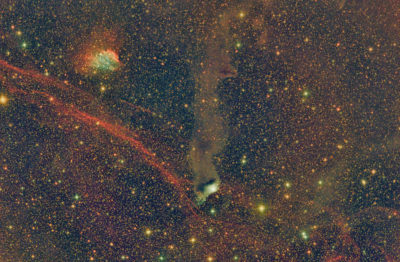
In March, 2008 I decided that I would never be content with the image spot sizes and optical idiosyncrasies of my old C-14 telescope and finally embarked on building my own 16 inch Newtonian astrograph. I chose a Newtonian configuration because of its elegant simplicity, low cost, optical speed, and superb performance compared to other scope designs such as the Ritchey-Chretien, Cassegrain, and Dall-Kirkham. All high end imaging systems necessitate flatfield correctors in addition to their native optics. The extremely versatile Newtonian offers at least seven correctors from different manufacturers to choose from with spot sizes from 12 to 7 microns that yield pin point stars across the wide fields captured by today’s large CCD chips.
Astrographs are scopes designed to be especially well suited for imaging as well as visual enjoyment. The following components are required to attain this objective: superb optics, a robust backlash free focuser, a flex free optical tube with an extremely low coefficient of thermal expansion, ability to hold perfect collimation while pointing to any part of the sky, and an efficient ventilation system that quickly equilibrates scope temperature to ambient.
I opted for a primary mirror made of fused quartz because of quartz’s significantly lower coefficient of thermal expansion, lighter weight, and better price to value ratio over soda glass, borosilicate, or Pyrex. I settled on a relatively fast f/4.5 focal ratio for long deep sky exposures. The mirror is also well suited for high resolution planet imaging at f/23 with a 5x Powermate at 9,150mm. I chose the excellent services of Terry Ostahowski to produce the optics because he is one of very few master opticians who provides interferometer test results taken from 888 data points yielding an exquisite primary mirror with a 0.97 Strehl ratio as part and proof of his work quality. The 3.1″ Ostahowski secondary mirror gives a fully illuminated and unvignetted image on my KAI3200 CCD imaging chip. It creates a 19.4% obstruction relative to the primary mirror’s diameter and only 3.7% obstruction in relation to total imaging area. This low obstruction ratio favors good contrast for planet imaging.
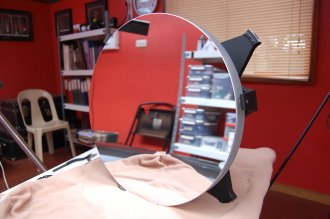
Frank Uroda is responsible for providing me with an impeccably finished and handsome lightweight carbon tube so stiff it holds perfect collimation pointing from 15 degrees above the horizon all the way to the zenith. I chose carbon over fiberglass or aluminum because of its superior weight, stiffness, and thermal coefficient of expansion. Frank even threw in six vibration free Sunon magnetic levitation fans mounted on the carbon rear end cover.
 The 18 point aluminum floating mirror cell which holds the primary mirror was made by Dave Rubenhagen of DAR Astro Machining, Canada. Dave specially machined and lightened his last stock 16″ mirror cell to better conform to my specifications. The cell works perfectly with no pinching of optics. The primary mirror is attached to the cell using silicone glue “blobs” that were allowed to cure a week with removable 1mm spacers before finally being mounted in the carbon tube.
The 18 point aluminum floating mirror cell which holds the primary mirror was made by Dave Rubenhagen of DAR Astro Machining, Canada. Dave specially machined and lightened his last stock 16″ mirror cell to better conform to my specifications. The cell works perfectly with no pinching of optics. The primary mirror is attached to the cell using silicone glue “blobs” that were allowed to cure a week with removable 1mm spacers before finally being mounted in the carbon tube.
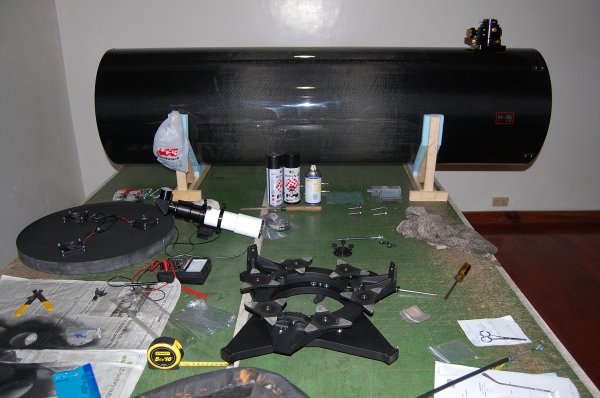
I chose an extremely robust 3″ Feathertouch focuser and radiused baseplate by Starlight Instruments. The focuser easily carries my ST10 camera, filter wheel, and AO8 adaptive optics which weigh nearly five pounds. Its operation is silky smooth and free of any backlash. The unit feels extremely solid and is a pleasure to use. My sturdy spider, secondary holder, and secondary digital dew preventer are from AstroSystems. All three components work extremely well and unobtrusively. A PIC dual temperature digital temperature meter is used to compare the primary mirror temperature with ambient. I got it from Electronics DIY. Mounting rings are by Parallax.
To better accommodate the 114 pound payload (consisting of the 72 pounds 16″ OTA, mounting rings, dovetail plates, guide scope, finder, and Borg 77ED widefield scope), I added a 10″ extension to the counterweight shaft of my Losmandy Titan, http://www.losmandy.com. The original stock counterweight shaft fully loaded with six 22lb weights was not heavy enough to balance the full payload. The installation of the 10″ shaft extension now only requires five instead of six 22lb counterweights to do the job. Mount periodic error is corrected using PEMPro by CCD Ware at www.ccdware.com.
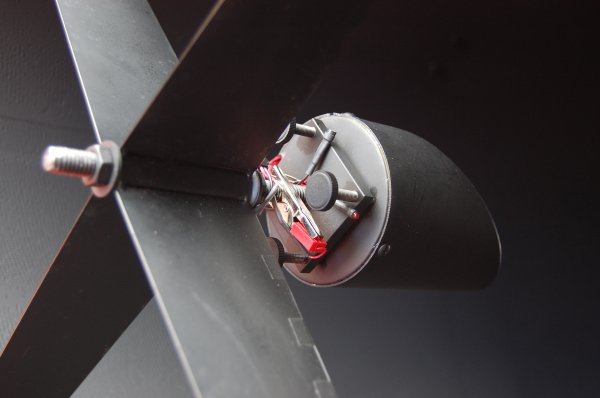
The performance of superb optics can only be realized with nothing less than perfect collimation. Catseye collimation system provides the indispensible tools to perfectly collimate fast Newtonians which are especially sensitive to even slight miscollimation. The tools are extremely well machined and easy to use. Perfect collimation takes under five minutes once you get used to doing it. The importance of perfect collimation can be perused in this excellent site: http://legault.perso.sfr.fr/collim.html. The Catseye collimation tools are extremely sensitive but yet easy to use especially since they can be used in broad daylight instead of having to wait for night time and precious clear sky time to collimate the scope. Further collimation tweaks can be examined and perfected with the imaging camera attached to the scope using CCD Inspector from CCD Ware at www.ccdware.com.
A Telrad finder and Borg 60mm finderscope fitted with an illuminated reticle are used to aid in pointing the scope since I find star-hopping to my targets a more intimate way to kiss the sky. The 60mm finder also serves as a widefield viewer for extended sky objects.
The visual performance of the N16 is quite spectacular and a true pleasure to observe with. The images of planets are breathtakingly razor sharp during moments of steady seeing. Faint deep sky object brighten up and reveal plenty details with the generous light gathering area of the fast 16 inch mirror. The scope is also this imager’s dream come true. The few test images I have taken are very satisfactory. All in all, the N16 is everything and more than I had hoped for. Nestled in its roof top observatory at home, it is a magical portal to the outskirts of infinity.

